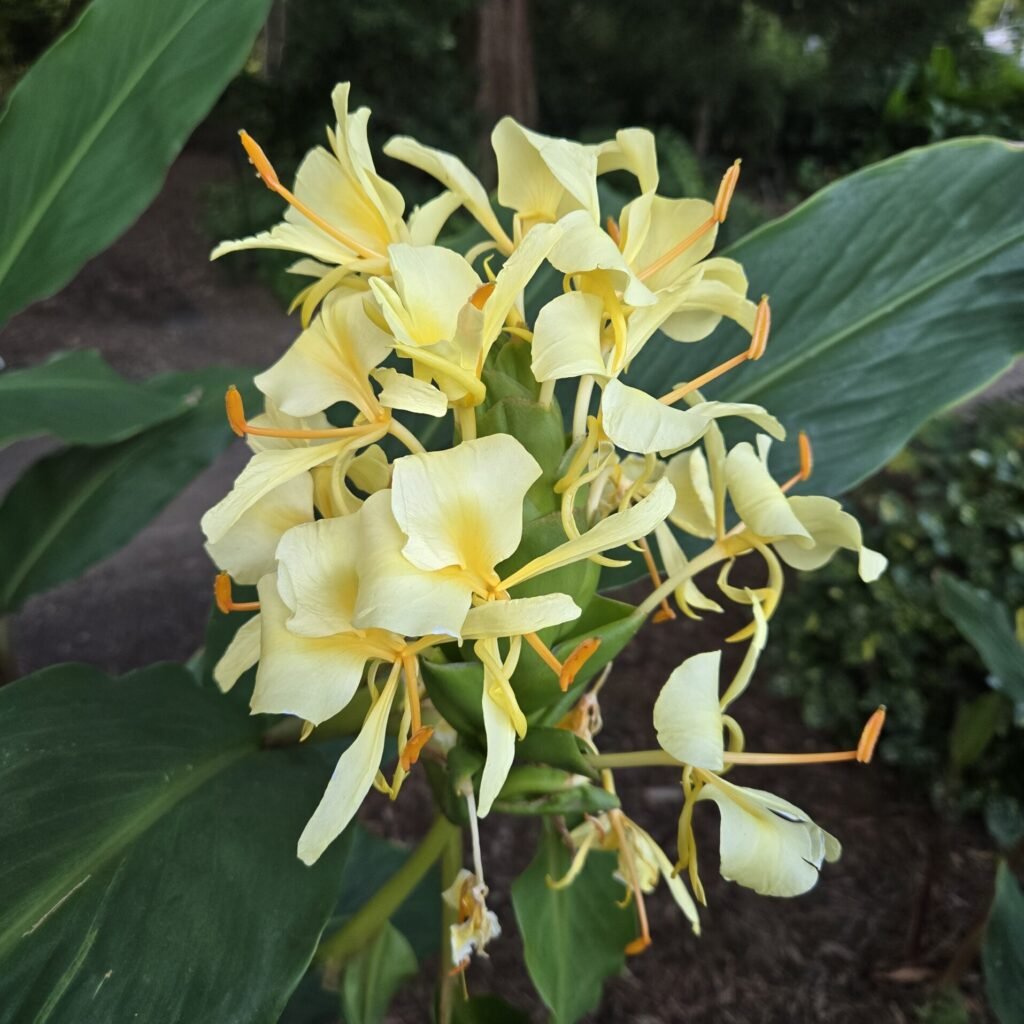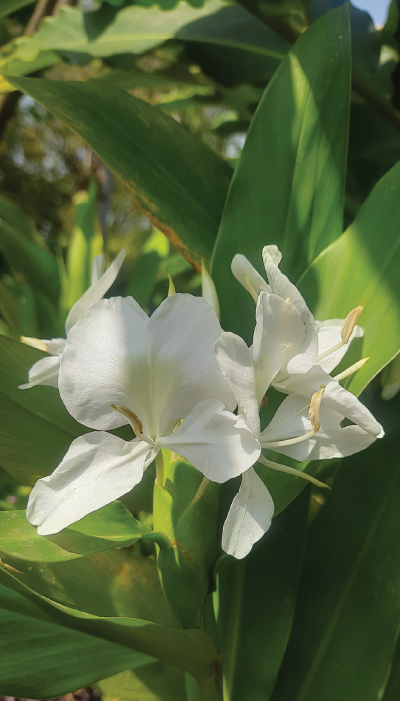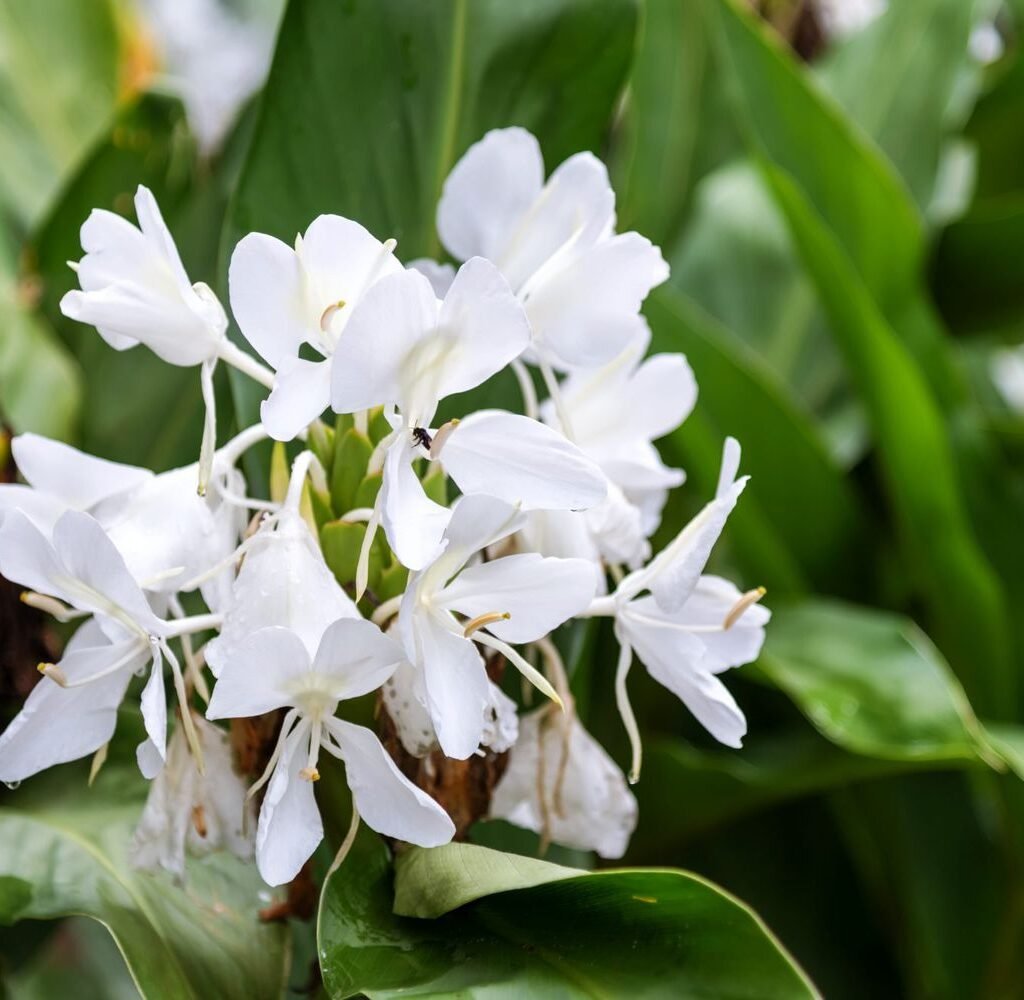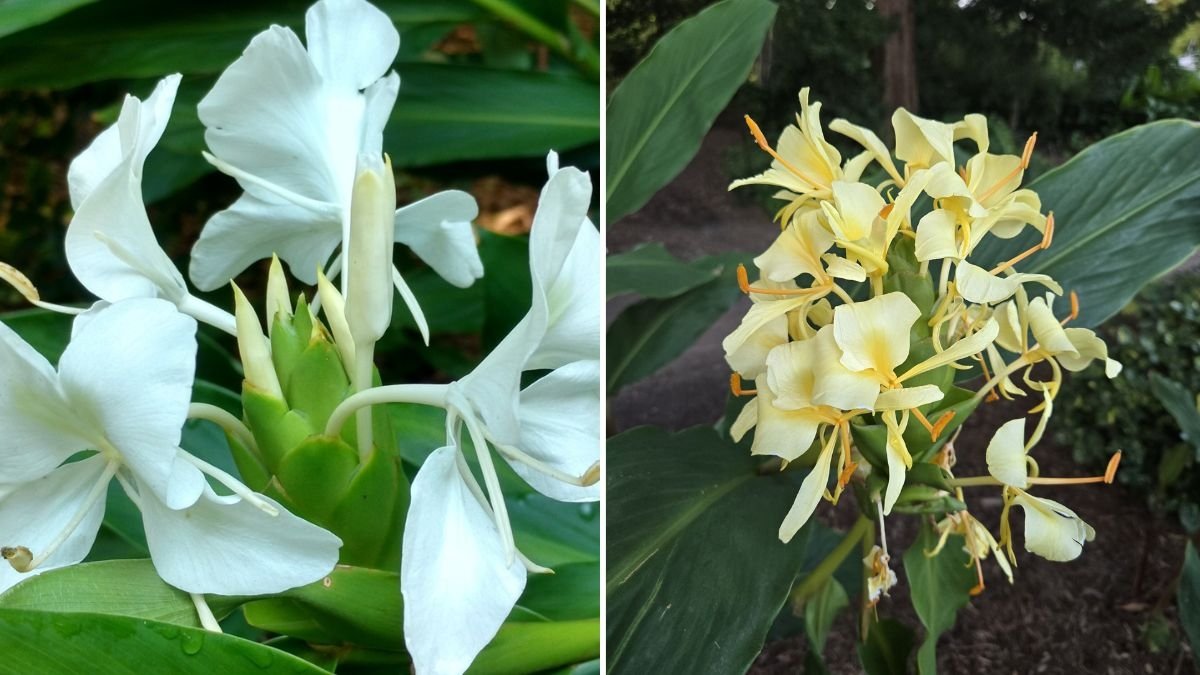If you’re looking to add a touch of tropical luxury to your garden or home, ginger lily might be the perfect plant. Known for its intoxicating fragrance, lush foliage, and vibrant blooms, ginger lily (genus Hedychium) is gaining immense popularity across the U.S. for both landscape beauty and natural wellness uses.
This tropical perennial isn’t just a treat for the eyes — it’s a symbol of tranquility, rejuvenation, and health. With its lush green leaves and delicate flowers that often resemble butterflies, ginger lily brings a piece of the tropics into any American backyard, spa, or aromatherapy space.
In this article, we’ll explore everything you need to know about ginger lilies — from their origins and varieties to their health benefits, care tips, and creative uses in modern American lifestyles.
What Is Ginger Lily?

Ginger lily refers to a group of flowering plants in the Hedychium genus, part of the Zingiberaceae (ginger) family. Despite the name, it’s not the same as culinary ginger (Zingiber officinale), though the two share some botanical traits.
Originating in the Himalayas, India, and Southeast Asia, ginger lilies thrive in warm, humid climates and are celebrated for their heady scent and tropical elegance. The flowers bloom in vibrant shades of white, pink, yellow, and orange, making them a stunning choice for ornamental gardening and floral arrangements.
In the U.S., they are increasingly used in Southern and coastal gardens, especially in Florida, Louisiana, Texas, and Hawaii, where the climate mirrors their native tropical habitat.
Popular Varieties of Ginger Lily

There are over 70 species of Hedychium, but a few have become especially popular among American gardeners and plant enthusiasts:
1. White Ginger Lily (Hedychium coronarium)
Also called butterfly ginger, this variety is known for its pure white, orchid-like blossoms and strong, jasmine-like fragrance. It’s often grown near patios and garden paths to take advantage of its perfume during summer evenings.
2. Kahili Ginger (Hedychium gardnerianum)
Featuring golden-yellow flowers with red stamens, the Kahili ginger lily stands out as a tropical showpiece. Native to the Himalayas, it thrives in warm U.S. zones and attracts pollinators like butterflies and hummingbirds.
3. Pink Ginger Lily (Hedychium coccineum)
This variety brings lush pink-orange blooms that add a tropical punch to landscape designs. It’s more sun-tolerant and ideal for bright gardens.
4. Orange Ginger Lily (Hedychium aurantiacum)
Admired for its bright orange petals, this species pairs well with tropical foliage plants like banana, bird of paradise, and palms.
Each variety offers its own unique charm, scent, and growth habit, making ginger lilies incredibly versatile for gardeners seeking both color and fragrance.
Health and Wellness Benefits of Ginger Lily

Beyond its beauty, ginger lily has a long history of therapeutic and medicinal use in traditional Ayurveda, Chinese medicine, and modern aromatherapy. Its rhizomes, flowers, and essential oils are known for their calming, antimicrobial, and rejuvenating properties.
Here’s how ginger lily contributes to holistic wellness:
1. Aromatherapy and Stress Relief
The essential oil of ginger lily is often used in diffusers, massage oils, and candles for its soothing and mood-boosting aroma. The floral scent is believed to ease anxiety, reduce fatigue, and promote emotional balance — making it a favorite in spas and yoga studios across the U.S.
2. Skin and Hair Health
Extracts from ginger lily are used in natural skincare and haircare products. Its antioxidants help detoxify the skin, while its antimicrobial properties make it ideal for acne-prone or sensitive skin. In haircare, it’s believed to stimulate the scalp and improve shine.
3. Natural Pain Relief
In traditional medicine, ginger lily rhizomes were used as anti-inflammatory poultices for sore muscles and joints. Today, natural therapists use ginger lily oil in aromatherapy massages to relieve muscle tension and body aches.
4. Respiratory Health
The plant’s natural compounds can help clear congestion and support respiratory health. Inhaling ginger lily vapors or using the oil in steam therapy is said to aid in breathing comfort, especially during seasonal colds.
5. Antioxidant and Detox Support
Studies suggest that ginger lily contains phenolic compounds and flavonoids that protect against oxidative stress, supporting immune health and detoxification — two major wellness trends in the U.S.
How to Grow Ginger Lily in American Gardens

If you want to enjoy the tropical charm of ginger lily in your backyard, you’ll be happy to know it’s relatively easy to grow, especially in USDA zones 7–11.
1. Light and Location
Ginger lilies prefer bright, indirect sunlight or partial shade. They thrive when planted in moist, well-drained soil with good air circulation.
Ideal planting spots include garden borders, around patios, or near water features — anywhere their fragrance can be appreciated.
2. Watering Needs
These plants love moisture! Keep the soil consistently damp but not waterlogged. In dry climates, mulching helps retain humidity around the roots.
3. Soil and Fertilizer
Use rich, loamy soil with organic compost. Feed with a balanced fertilizer every 4–6 weeks during the growing season (spring through early fall) to encourage lush foliage and vibrant blooms.
4. Temperature and Winter Care
Ginger lilies love warmth — temperatures between 60°F and 90°F are ideal. In cooler U.S. regions, grow them in containers that can be moved indoors during winter. The rhizomes can also be dug up and stored in a dry place until spring.
5. Pruning and Maintenance
Remove spent flowers to encourage more blooms and prevent energy loss. Trim dead or yellowing leaves to keep the plant healthy and tidy.
Ginger Lily in Landscaping and Home Décor

1. Tropical Landscape Design
In American garden design, ginger lilies are often used to create a lush, resort-style look. They pair beautifully with other tropicals like hibiscus, canna lilies, elephant ears, and palms.
Their tall, graceful stems make them ideal for background planting or privacy screens, while their colorful blooms brighten garden corners and walkways.
2. Indoor and Patio Containers
For apartment dwellers or colder states, potted ginger lilies are a gorgeous choice for balconies, patios, or sunrooms. Their lush leaves and fragrant flowers instantly transform small spaces into relaxing retreats.
3. Floral Arrangements
Fresh ginger lily blooms are often used in floral arrangements and wedding décor. Their striking petals and tropical aroma make them a favorite for spa-inspired home styling and event centerpieces.
Ginger Lily in Modern American Wellness Trends
With the rise of natural self-care, aromatherapy, and eco-conscious gardening, ginger lily is enjoying a resurgence among wellness enthusiasts and sustainable gardeners.
Here’s how it’s trending in modern American lifestyles:
- Spa and Aromatherapy Brands: Ginger lily oil is a star ingredient in high-end essential oil blends, perfumes, and lotions.
- Eco-Luxury Candles: Its delicate scent is featured in soy candles and diffusers that promote mindfulness and relaxation.
- Holistic Beauty: Natural beauty lines use ginger lily extracts in serums, hair oils, and body scrubs for a botanical touch.
- Home Gardening Movement: As Americans embrace home gardening and tropical plants, ginger lily is becoming a must-have ornamental flower.
Harvesting and Using Ginger Lily
Ginger lily blooms typically appear in late summer through fall, depending on your region. Here’s how you can use them at home:
- Cut Flowers: Snip fresh blooms and place them in vases for long-lasting fragrance.
- Essential Oil Extraction: Distill the flowers and rhizomes for home aromatherapy oil (requires proper equipment).
- DIY Spa Blends: Add dried petals to bath salts, scrubs, or potpourri for a luxurious, natural scent.
Sustainability and Eco-Friendly Value
One of the best parts of growing ginger lily is that it’s eco-friendly and sustainable. Once established, it requires minimal chemical inputs, attracts pollinators like bees and butterflies, and enriches the biodiversity of your garden.
In regions like Hawaii and the southern U.S., ginger lilies are even used in reforestation and ornamental restoration projects, helping protect native ecosystems.
Fun Facts About Ginger Lily
- The white ginger lily is the national flower of Cuba and symbolizes purity.
- Ancient Ayurvedic texts mention ginger lily as a rejuvenating herb for the body and mind.
- In Hawaii, ginger lilies are used in leis and floral garlands for celebrations.
- The flowers bloom for several weeks and release their fragrance strongest at dusk.
- Some species are nicknamed “butterfly ginger” because their petals resemble fluttering wings.
Conclusion: Why Ginger Lily Deserves a Spot in Your Life
The ginger lily is more than just a flower — it’s a sensory experience that combines beauty, aroma, and wellness in one elegant plant. Whether you’re designing a lush tropical garden, creating a spa-like home ambiance, or exploring natural aromatherapy, ginger lily brings a touch of the exotic right to your doorstep.
With its effortless grace, healing aroma, and easy-care nature, it’s no wonder this plant is becoming a top choice in American landscaping and holistic living. So, if you’re ready to embrace tropical serenity, let the ginger lily be your fragrant guide to a more beautiful, mindful, and naturally inspired life.






Leave A Comment